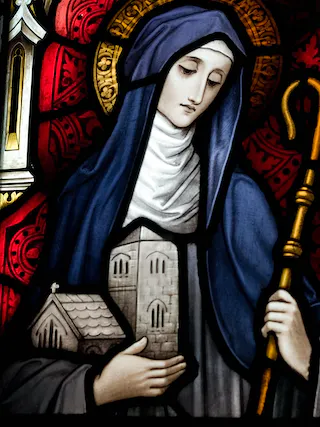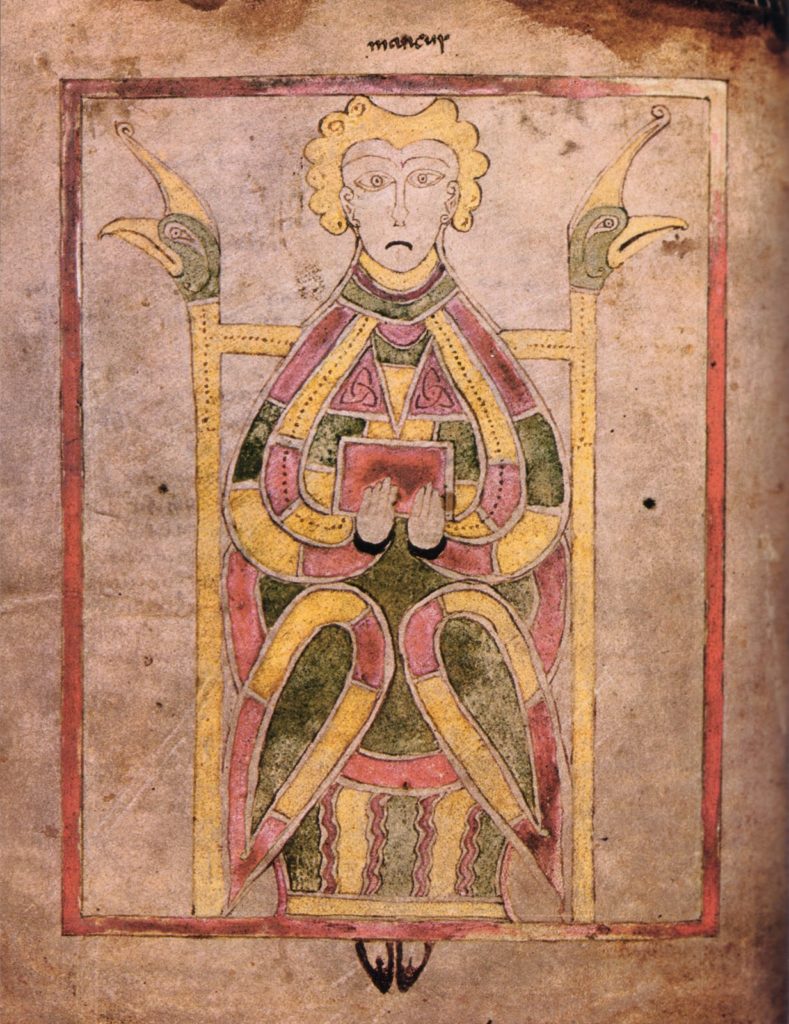Female Bishops in the Roman Catholic Church: A Look into Church History at Saint Brigit of Kildare
When it comes to advocating for the advent of women’s ordination in the Roman Catholic Church, the theological and moral reasoning extend far beyond the concept that we should allow ordination because it has occurred in the past. But there is evidence to support this reasoning in the figure of Saint Brigit of Kildare. Saint Brigit is a notable figure not only in historical and contemporary Ireland but around the world in Christian contexts.

Nary two weeks ago, I saw her depicted in stained glass in my own church. She is venerated in the Roman Catholic Church, the Eastern Orthodox Church broadly, and in the Episcopal confession. She is recognized for founding a monastery in Kildare and for performing numerous miracles. As a Roman Catholic college student engaging in summer research on this individual in pursuit of my bachelor’s degree in religious studies and late antique medieval studies, I came across fascinating evidence of a female Bishop, Saint Brigit, from the late 400s/early 500s C.E. in Ireland, in at least two different hagiographies pertaining to her. Both are written from a Christian perspective, as seen in the style and approach, and were written within a few hundred years of her life. In Roman Catholic belief, these texts, due to their hagiographical form, authorship, and prominence in scholarship, hold as true. The first text is Vita Sanctae Brigitae II or the Life of Saint Brigit Part Two, likely written by Cogitosus, a monk at Kildare.

Using an English translation by S. Connolly and J.-M. Picard, I was able to discern the clear meaning devoid of significant translation error due to its utmost clarity. In the preface of the text, there is a clear description of her power in the Catholic Church in Ireland, as exhibited in phrases such as “…[she was] the head of almost all the Irish Churches with supremacy over all the monasteries of the Irish…” (Connolly and Picard 11) when describing her role in the monastery she built and “…by her wise administration she made provision in every detail for the soul of her people according to the rule” (11). The text clearly enumerates her power and influence in the Catholic Church in her region and in her Catholic community. Following the statements as such, she meets with Bishop Conleth to talk about, “… govern [ing] the Church with her in the office of bishop” (11). The text distinctly states that she and Bishop Conleth hold the title of Bishop and may work together in this office. The text proceeds to assert her power in different circumstances. The second text, Bethu Brigte, author unknown, more evidently details how she became a Bishop. Bethu Brigte is the central text discussing Saint Brigit’s life and has the most scholarship written about it. Upon her planned ordination to become a nun, the text declares that, “The Bishop being intoxicated with the grace of God there did not recognize what he was reciting from his book, for he consecrated Brigit with the orders of a bishop” (Bethu Brigte 24). Not only is she ordained, the “accidental” ordination was because the bishop was filled with God’s grace. If this is not a clear indication of the spiritual correctness of the ordination of women, then I do not know what is. She goes on to conduct many miracles and remains in a position of power and respect. Saint Brigit joins the ranks of women like Mary Magdalene, who are powerful figures doing pivotal work for the church. Each argues for women’s ordination by their positions and actions. If history of the ordination of women in the Catholic Church is what you need to persuade you of contemporary women’s ordination, look no further than Saint Brigit of Kildare.
Works Cited:
Bethu Brigte. CELT: Corpus of Electronic Texts, Accessed on July 12, 2022.
Connolly, S., and J.-M. Picard. Cogitosus: Life of Saint Brigit- Content and Value. Journal of the
Royal Society of Antiquaries of Ireland 117, 1987.

One Response
I love this post, sharing knowledge of Brigit’s historical power and significance. In “Landscape with Two Saints,”historian Lisa Bitel argues that within a hundred years of her death, Brigit was being portrayed as a water goddess, in part, at least, to obscure her actual power and influence as a bishop and the head of a monastery. Thank you so much for extending our knowledge of the actual Brigit, Alyssa